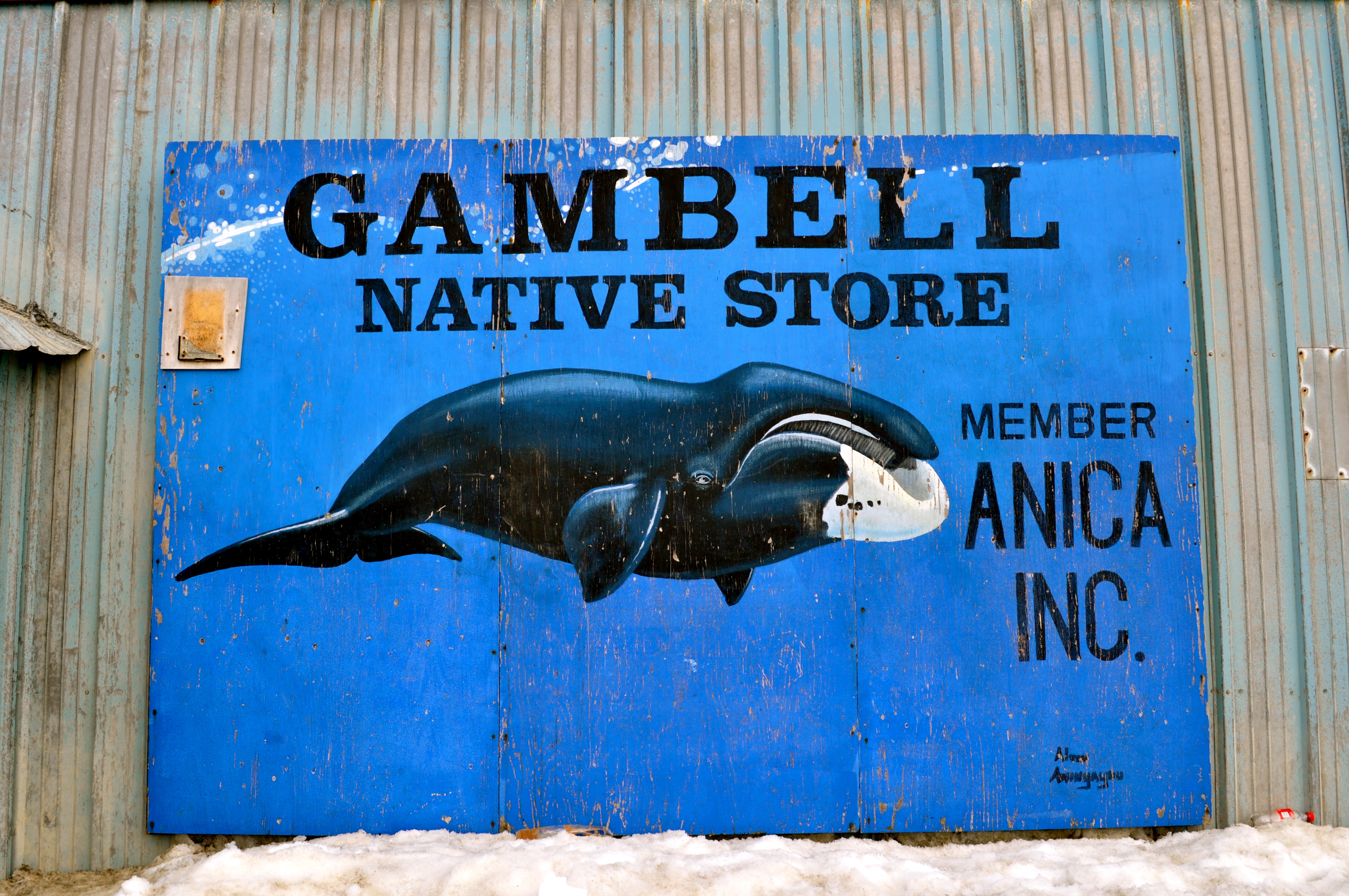Sign for the local Native Store
In late April, I flew out to Gambell, AK with a fellow ranger. Our goal was to explore climate change with students K-12 using the park’s new iPad curriculum. We were able to spend time in almost every classroom and received helpful feedback from the supportive teaching staff. As an added bonus, we got a glimpse of what it is like to live in a remote and vibrant community.
Gambell sits on the northwest cape of St. Lawrence Island in the middle of the Bering Sea. The island is closer to the Russian mainland than the Alaskan coast by about 100 miles. On clear days, you can even see Siberia! The town is home to 700 people. Siberian Yupik culture, which has roots stretching back thousands of years, is strong and alive in the community. Gambell was originally called Sivuqaq, but was renamed in the late 1800s to commemorate the community’s first missionary family when their boat sank on a return trip to the island.
View of Siberia from the flight to St. Lawrence Island
Upon our arrival we were greeted by friendly, helpful locals and caught a bumpy, but beautiful ride to the school on some four wheeled, all-terrain vehicles (ATVs). ATVs and snow machines seem to be the preferred mode of transportation in Gambell. The ground is largely composed of marble-sized gravel, but was still covered in large patches of snow that sparkled in the spring sunshine. When we weren’t in the classroom teaching lessons, we explored the beaches on the fringe of town.
Beach treasures wash up in all shapes and forms on the shore
Like most of the coastal villages in Alaska, life in Gambell is strongly tied to the sea. Subsistence, the harvest of wild resources, is important to the livelihood and culture of residents. Subsistence is more cost efficient, since food sold in the town store must be flown in from far away, but it is also an important community and cultural activity. People in this area have been harvesting marine mammals from the sea for thousands of years, and while modern technologies (guns, snowmachines, ATVs, motorboats, and refrigeration) have changed the tools used to harvest and made preservation easier, the act of participating in subsistence activities and sharing the harvest builds strong bonds among the community and ensures that traditional practices and knowledge will be passed down between the generations.
Baleen from a recent Bowhead Whale harvest blowing in the icy wind
Large, sculptural indications of past harvests like whale skulls and vertebrae can be seen along the gravel beaches that surround town. These are also accompanied by other treasures that wash up from the sea: sponges, corals, egg cases, driftwood, and crustaceans. Just a week prior to our visit, hunters had brought back a bowhead whale. Some bones and the skull were high up on the beach with skin and blubber still intact. I was grateful for the strong breeze that took the stench of rotting blubber with it and left me free to examine, poke, and prod the carnage with childlike wonder and awe.
Ranger Jenn photographs a whale carcass
We were lucky to be in Gambell for the beginning of the 34th annual Yupik Days Celebration. This year’s theme was “Heading into the future with guidance from the past.” Festivities included elder storytelling, a fashion show of beautiful, traditional clothing, Yupik sport competitions like the kneel jump and high kick, traditional Yupik dancing done to the beat of drums, and a reindeer feast!
I truly enjoyed our short time on the island and seeing how the community is embracing modern conveniences while maintaining knowledge from the past. As our plane took off and headed back to Nome the three giant wind turbines, installed in 2009, waved us goodbye.
Wind Turbines installed in 2009 help to power the remote village. Gambell is listed as a class 7 wind site.






